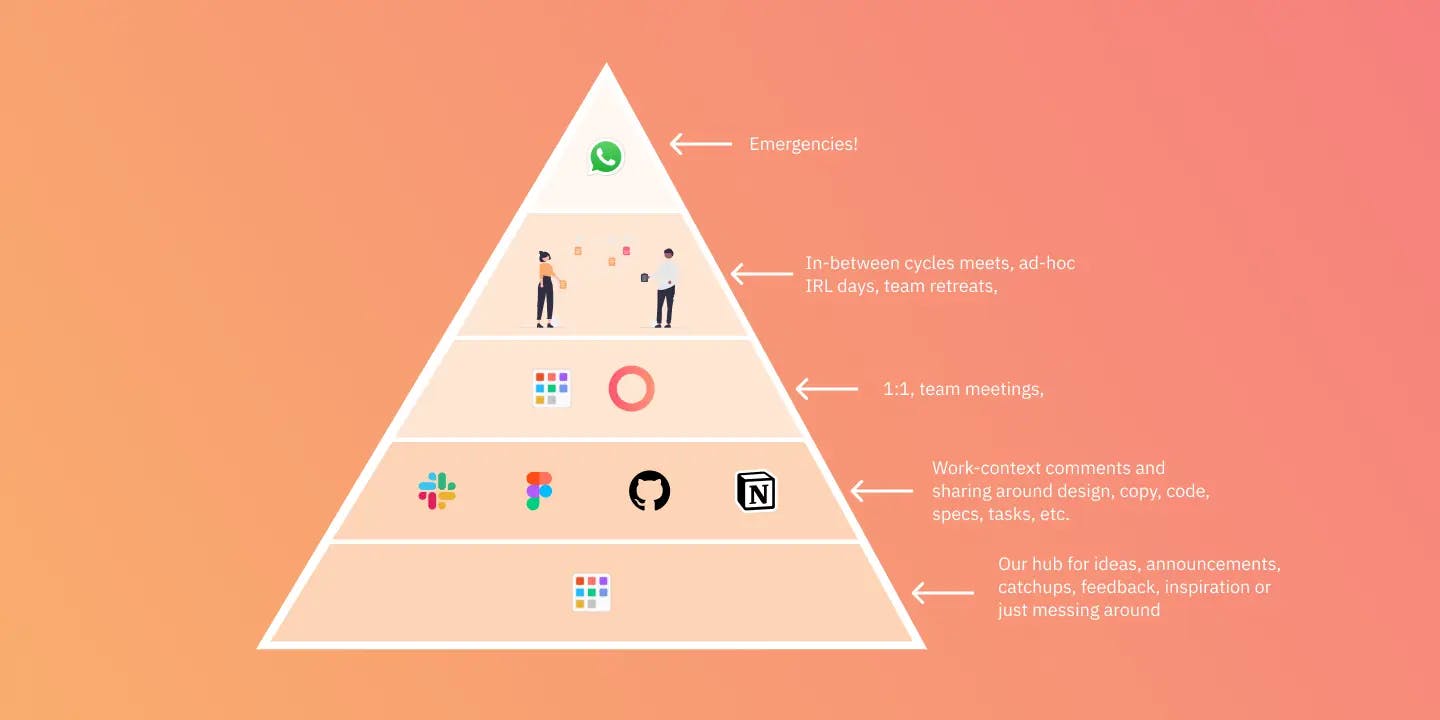What is async?
Async is short for asyncronous and an async team is a team of workers who are not physically present in the same location, communicating with each other solely using tools such as email, instant messaging, and video conferencing.
From a company perspecitve, async work at its best is running at full efficiency where work happens autonomously and with intention. Goals must be clear and set in advance, and trust must be there to allow freedom of execution. Async pushes everyone to be better.
All businesses are lifestyle businesses, and how you choose to work is a decision on lifestyle. 80 hour weeks are a lifestyle choice, just are four day work weeks. And whatever the choice, it's important to understand the intended results of your decisions. The goal of life is to be, and feel, liberated. Freedom is important & it’s important to work to live. Whatever you're working on, there’s more to life than solving problems. Our goal as a company is to move remote collaboration forward so teams can achieve more, through less.
Moot has been an async company since we began working on the product. However, it wasn't intentional that we would work this way.
We first started as a remote company (pandemic vibes). Then, as time went on, we became familiar with our stack and it became easier to automate workflows, such as ticketing and updates. It also seemed that we could, and should, avoid calling half heartedly and just use the time apart to work in flow and get stuff done. Using calls and IRL work as a way to socialise and catch eachother up.
What are the benefits of working asyncronously?
There are several benefits of working in an asynchronously. These include increased flexibility (I'm writing this blog post at 5 minutes to midnight), the ability to work from anywhere, and increased productivity.
The loss of the middle man, managers. Most office jobs are dominated by managers. Async is much more autonomous. Give people full freedom and let them be driven by the excitement of the work (or the excitement of approaching it in their way).
Freedom. Give people room to produce their best, in their way. If you can’t give people freedom, you’re working with the wrong people. Task based performance is the future. We are what we produce, not how long we spend producing it.
What are the challenges of working in an asynchronous remote team?
Communication, communication, communication. The challenges of working in an asynchronous remote team include the need for strong communication skills and the possibility of feeling isolated. For building an org, it's harder to ingrain culture when everyone is at home living their own.
How can the challenges of working in an asynchronously be overcome?
The challenges of working in an asynchronous remote team can be overcome by using communication tools effectively and by making an effort to connect with people on a personal level.
In terms of managing stack, trial and error is the best bet. Once you have your tools that work on a team by team basis, you can set that into the work culture. We use a range of remote tools that are both typical (slack, notion, figma), and those that are not yet typical (moot, remotion). It is an an ever evolving process.
However, no software has yet been able to make remote communication as good as IRL. Thus it’s important to meet in person. Meet every quarter (at least), and make it an experience so you can get to know the people behind the screen. Go somewhere new, try new things, have fun! See it as a on-site for working through high level issues. If you company can’t offer this, facilitate work so that people can get their social needs met outside of work and allow unscheduled time to think together and explore.
Also, make an effort to communicate things you normally wouldn’t in person. Share photos of your day, cool things you’ve found (even if not related to company), jokes etc. We automate Github issues/deployments to buzz on Slack so we can get motivated through the eachother's work.
Last, and perhaps most importantly, is be explicit about expectations. This manifests in your expectations for getting work done, but also in how you will be able to collaborate. Set overlap times where real time communication can happen. Take set time out to define targets together. Reflect on what's going great and what isn't. Setting expectations is a massive part of working IRL, but it's something that needs to be consiously communicated in a remote (and particularly async setting).
Working in an asynchronous remote team can be a great way to work, but it requires good communication and a personal connection with team members. And it can still be so much better.
We imagine a world where the we can have a great office experience, without the office. A more effective, and more collaborative, approach to work. A world where work & life are completely intertwined, in all the most joyful ways.
And this is exactly what we are building with Moot! An all-in-one workspace for remote and async teams. Initially Moot substitutes for quick, human fuelled, real time collaboration. We’re building a way to not only maintain the efficiency of remote/async, but also make as engaging as IRL.
Does that sound exciting? If so, get in touch, book a demo, partner with us. Whether remote, hybrid or async, we're building the infrastructure for the future of work & we want your company to be part of the journey. Let's make it great.
